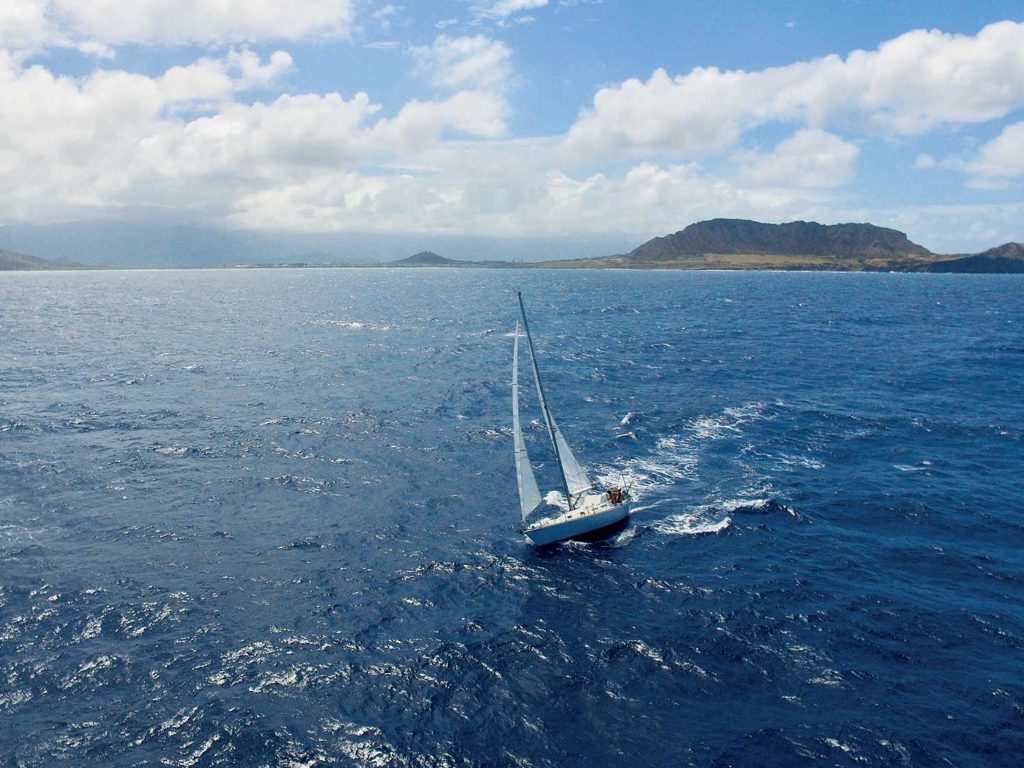
From the first time that I ever laid eyes on the Peterson 34 on the Honolulu Craigslist, I liked what I saw. She had sexy lines, a huge double-spreader rig, a tiller and a spacious, functional interior. Very clearly, the late-1970s racer/cruiser deserved a closer look. A quick trip over to SailboatData.com outlined some compelling basic details, namely the fact that the boat had a 50 percent ballast ratio and an underbody that belied her stellar upwind performance and all-around seaworthiness. A few more online searches revealed that the Peterson 34 was born from an impressive and storied pedigree. Essentially a production racer/cruiser version of a very successful mid-’70s racing yacht named Ganbare, she was one of designer Doug Peterson’s breakthrough designs; a model that would stand the test of time and help cement his reputation as one of the best yacht designers of all time.
Honolulu, and Hawaii in general, has a pretty hit-or-miss sailboat market. Situated a long and generally easy passage downwind of California, Hawaiian harbors tend to collect a lot of the West Coast’s discards, for better or worse. With a steady supply of new boats showing up and a relatively stagnant level of demand, good boats can oftentimes be had for cheap. Quiver (then named Seabiscuit) had sailed in from California via Tahiti 15 years earlier. Lovingly owned by a couple from Kaneohe, she had been on the market for a couple months when I came knocking. After offering the owners ten grand and the promise that the boat would get well used, I was genuinely stoked on the proposition of smashing around Hawaii on a solid, powerful racer/cruiser that I could afford to purchase.
Less than two years prior, I had been out there doing it on a small boat, cruising across the Pacific on my engineless Cal 2-27 Mongo. Like Quiver, I had also purchased that boat somewhat impulsively on Craigslist, though in Tacoma, Washington. I bought Mongo for $4,000 in September of 2012 and eventually sold her in Opua, New Zealand about 2 1/2 years later. Each time that I looked at my new boat, Quiver, my heart stirred. I didn’t know what, I didn’t know why, and I didn’t even yet know where, but I firmly held onto one undeniable truth: We would be going places.
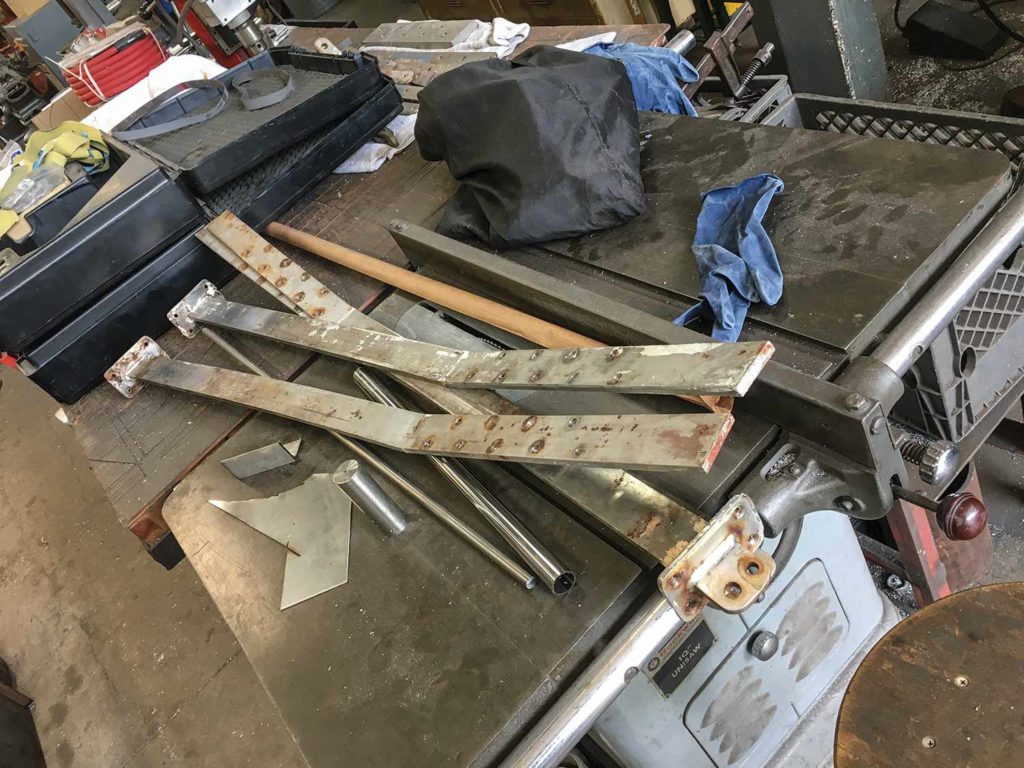
Living in the surf mecca that is Hawaii and having a very capable cruiser, the boat represented to me a vessel that could be filled with surfboards and taken on amazing surf-focused adventures. When one talks about “living the dream,” that’s mine. Grab a couple mates, load the boat with boards and sail somewhere incredible. Rock up, drop the hook and paddle out into perfect surf. Rinse, rest, repeat. By the time that I had the boat berthed in Haleiwa during the peak of the winter season on Oahu’s famed North Shore, Quiver was born. Not only was the boat filled with an extensive “quiver” of surfboards and stand-up paddle boards, but the name represented so much more. She was my shelter and my sanctuary, she was my hobby, my cruising boat, my occasional racing yacht, and a loyal friend. Through some of my darkest hours of love and loss, the boat was everything to me; she truly represented the whole quiver, hence the name.
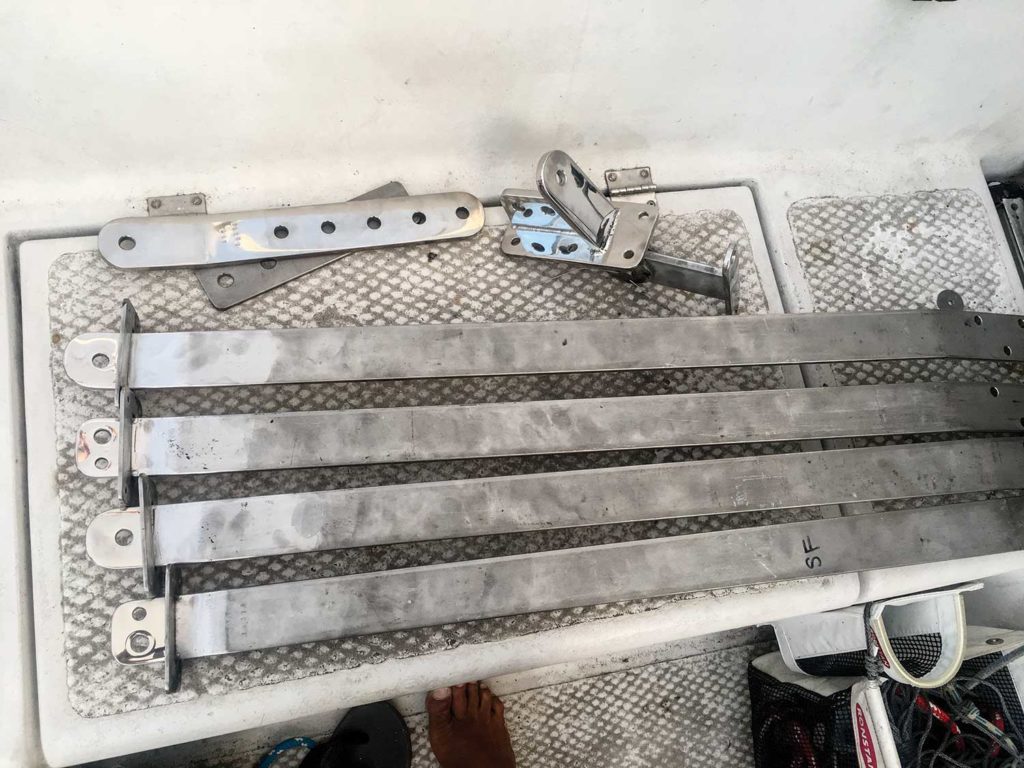
With stiff trade winds pumping around 300 days per year and high, volcanic peaks that tend to funnel both the breeze and the seas, sailing across the channels in Hawaii is difficult for most boats, and downright treacherous for some. One of the criteria that I looked for when deciding on a new boat was that I wanted one that excelled upwind and could make progress into gale-force headwinds. With her deep, lead fin keel and solid ballast ratio, Quiver absolutely crushes uphill and has lived up to the Peterson 34’s reputation as an upwind “freight train.” Many of my friends sail tubby double enders and their predicament was oftentimes the same: Since they couldn’t sail good upwind angles, they instead waited for lighter air or an atypical wind direction so that they could motor, reach or run across the channel. With a reef or two in the main and the no. 4 jib, Quiver could seemingly go anywhere in the islands at almost any time. And has. Frequently.
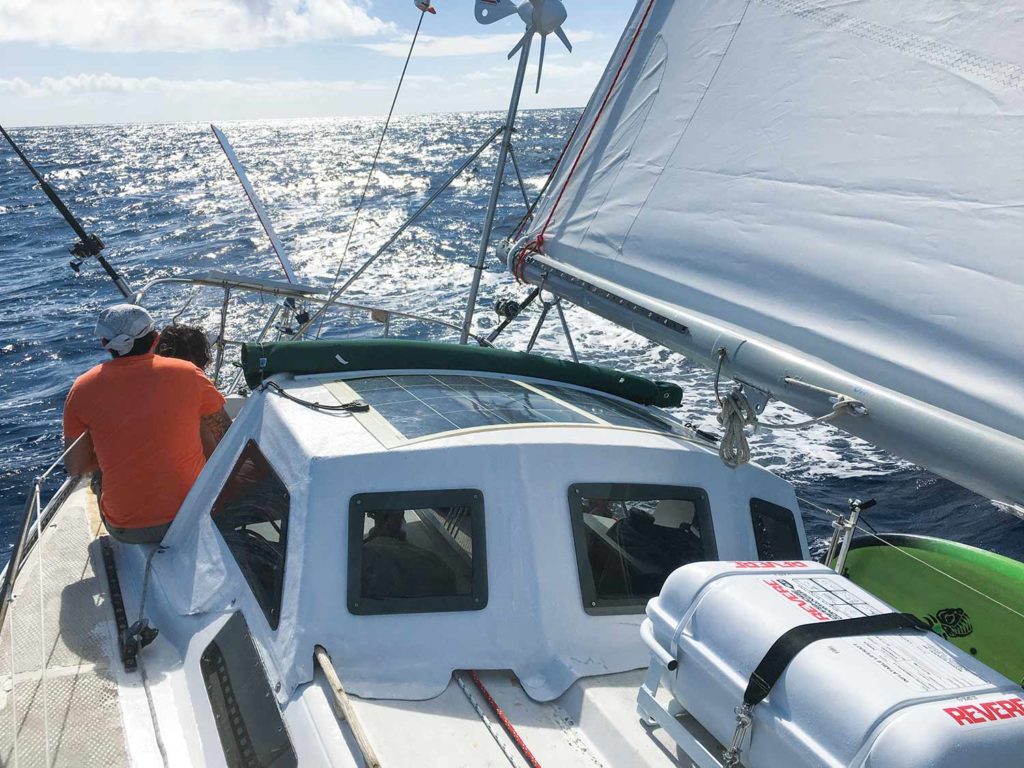
Right off the bat, however, I had a major scare with the boat when a rigging component on the headstay failed as a result of living inside a roller furling drum that was not draining water properly and was instead promoting corrosion. Extremely lucky to not lose the rig, I measured all of the shrouds and ordered all-new standing rigging from my buddy Logan at Rigworks in San Diego. Those guys have helped me remotely rig a few boats now, and I was stoked to get her up and going again in short order. Along with the rigging, I added two solar panels, an autopilot, LED lighting, an inverter and some other basics to bring Quiver up to a good, livable, basic cruising standard.
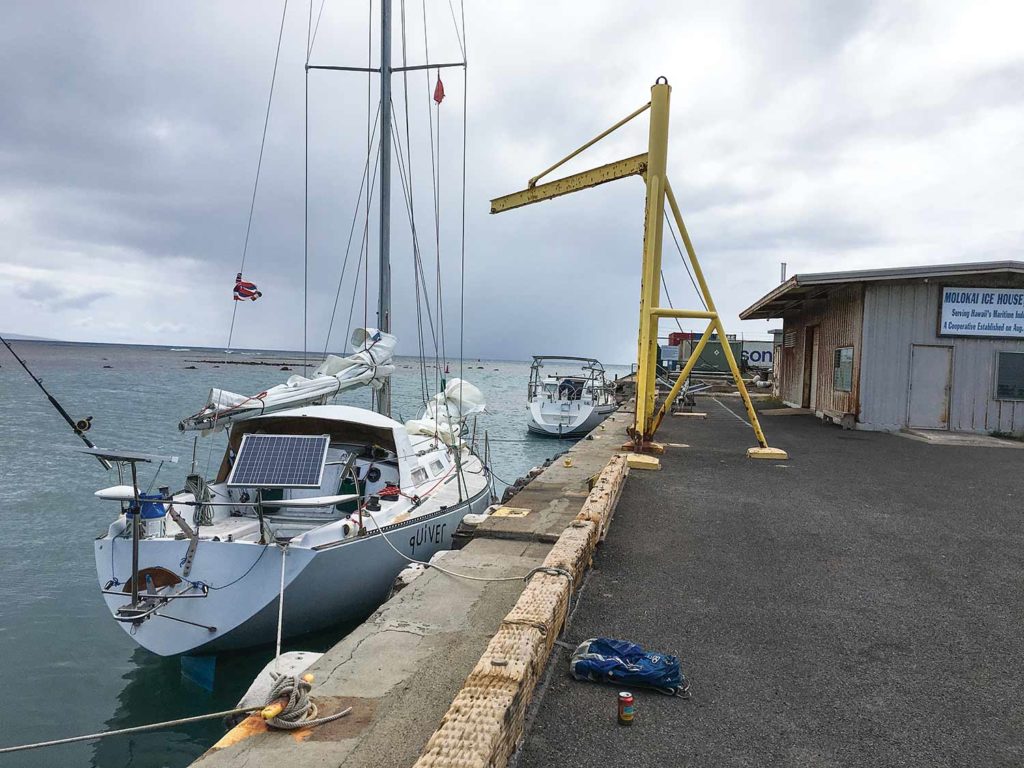
As far as I was concerned, it was the roller furler that had nearly brought the rig down. I am generally not a fan of roller furling on boats this size (for far more reasons than I have room to explain here) and wanted a hank-on boat from day one. When more funds became available, I stripped off the furler in favor of a bare headstay and then called up some of my favorite sailmakers to help me trick out my sail inventory. First, I enlisted the Ullman Sails loft in Honolulu to convert the two good jibs that came with the boat into hank-on sails. This effectively gave me a good light-air genoa and a fairly tired but serviceable 110 percent headsail (not an overlapping sail but one that filled out the foretriangle nicely). With two good headsails, I then called up my pals at Ullman Sails in Newport Beach and Quantum Sails in Point Richmond, California, and purchased a new, small “blade” jib (about 90 percent) and a new storm jib. Counting that sail, I then had what I refer to as jib no. 1, 3 and 4: the full quiver of jibs.
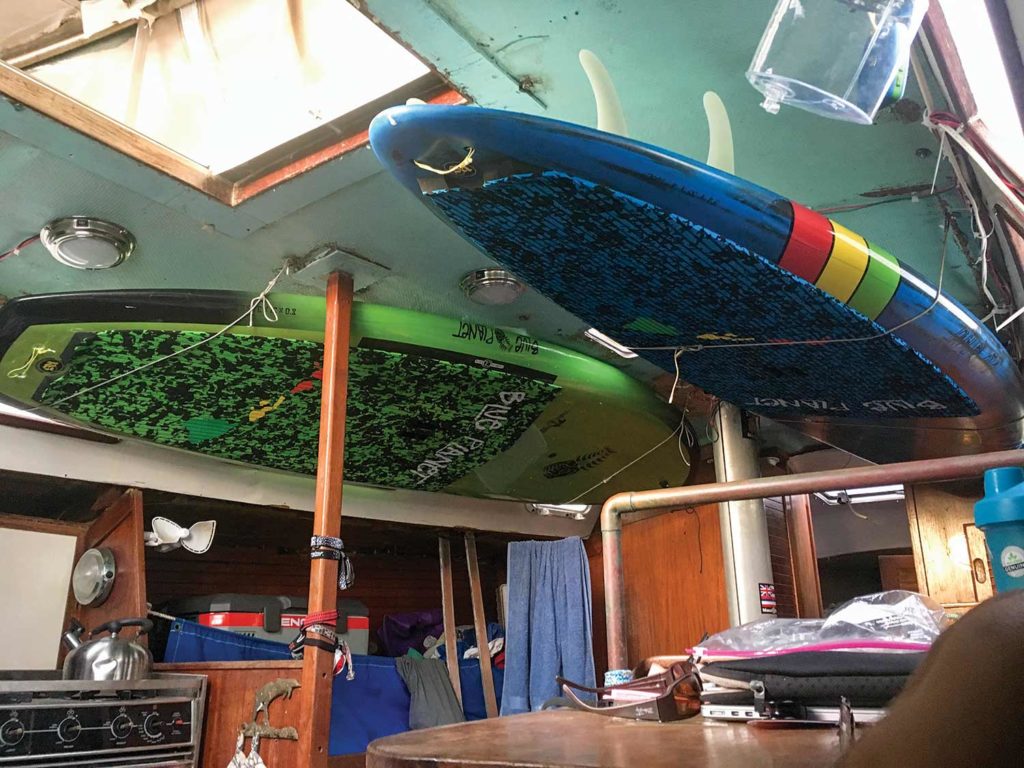
A lot of good jibs and a good mainsail are wonderful to have, but when the breeze goes aft, or in light air, I like to put up a spinnaker. Quiver came with a good (if slightly undersize), thick asymmetrical cruising kite that I am a big fan of. Lashing the whisker pole down to the toe rail at the bow using small-diameter Spectra, I jury-rigged a pretty effective little cruising bowsprit that worked perfectly. Based on the success of the prototype, I scored an old boom section off a small boat and made a more permanent cruising bowsprit. Completing our sail inventory up forward, my boys at the Ullman loft in Newport Beach again came through in a big way, this time with a nice used J/105 racing spinnaker that really maxes the boat out on downwind sail area and should be our secret weapon when cruising in light winds.
With my inventory of headsails sorted, I had to deal with the mainsail, which had been a problem since day one. The main that came with the boat — despite the fact that it’s in perfectly usable shape — was a sail that I never fell in love with. It’s a bit blown out and ugly, and I wanted a third reef, among other upgrades. Once again spreading the love around to various sailmakers, I contacted my pals up at Ballard Sails in Seattle and ordered a new, super beefy, triple-reefed mainsail. With reef lines that are led to the cockpit and a Tides Marine Strong Track mainsail track that makes getting the main up and down exponentially easier, changing gears on Quiver is now a very manageable task, even for just one person and off the breeze. A nice mainsail, a versatile hank-on headsail inventory, a good mainsail luff system, and two easy-to-use A-kites have completely transformed the boat.
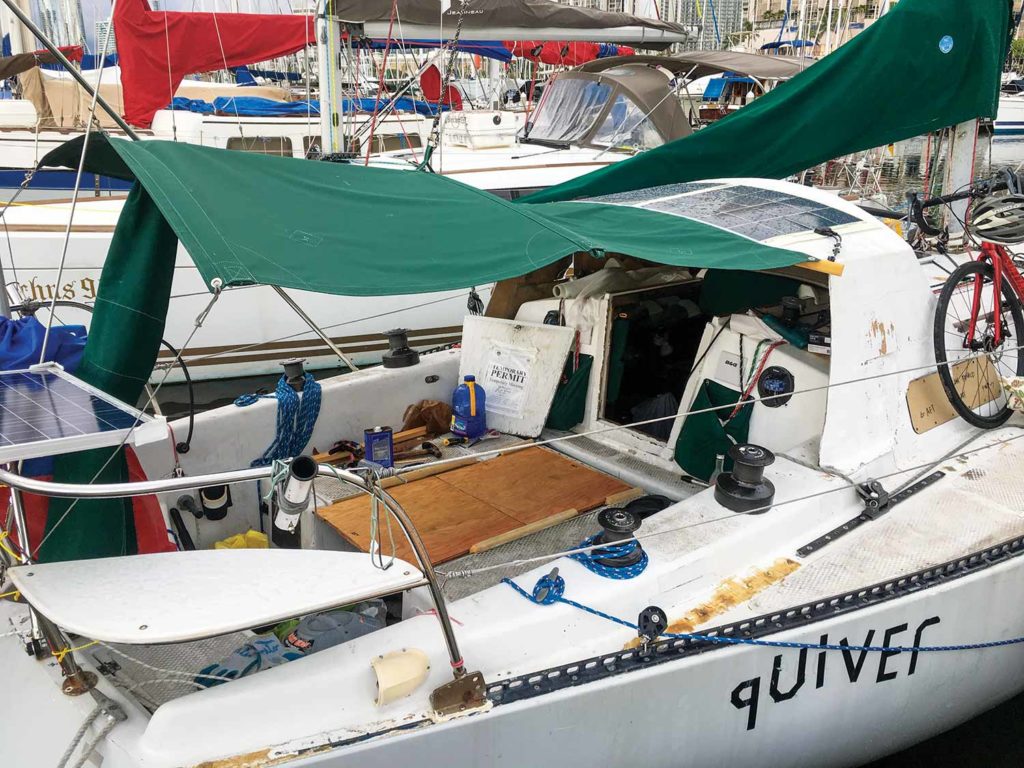
At some stage during this whole process, I realized Quiver would be capable of far more than trips through the Hawaiian islands and even across the Pacific. And I began to plan for a voyage around the world.
Any bluewater cruiser, delivery captain or shorthanded sailor knows the importance of good self-steering. Early on, when I was first intending to sail to Tahiti and back, I lined up a cheap, used Navik windvane. Once I began preparing for a circumnavigation, I decided I really wanted a brand-new Monitor windvane. I called up the good people at Scanmar International, and they took great care of me and helped me get a new Monitor, which I have named “Tanguy” in honor of Vendée Globe sailor Tanguy de Lamotte, who now lives in the Bay Area. For my electric autopilot, I hooked up with renowned San Francisco-based solo sailor Brian Boschma and scored one of his Pelagic brand of autopilots, which has been named “Loick” in honor of the legendary French sailor Loick Peyron.
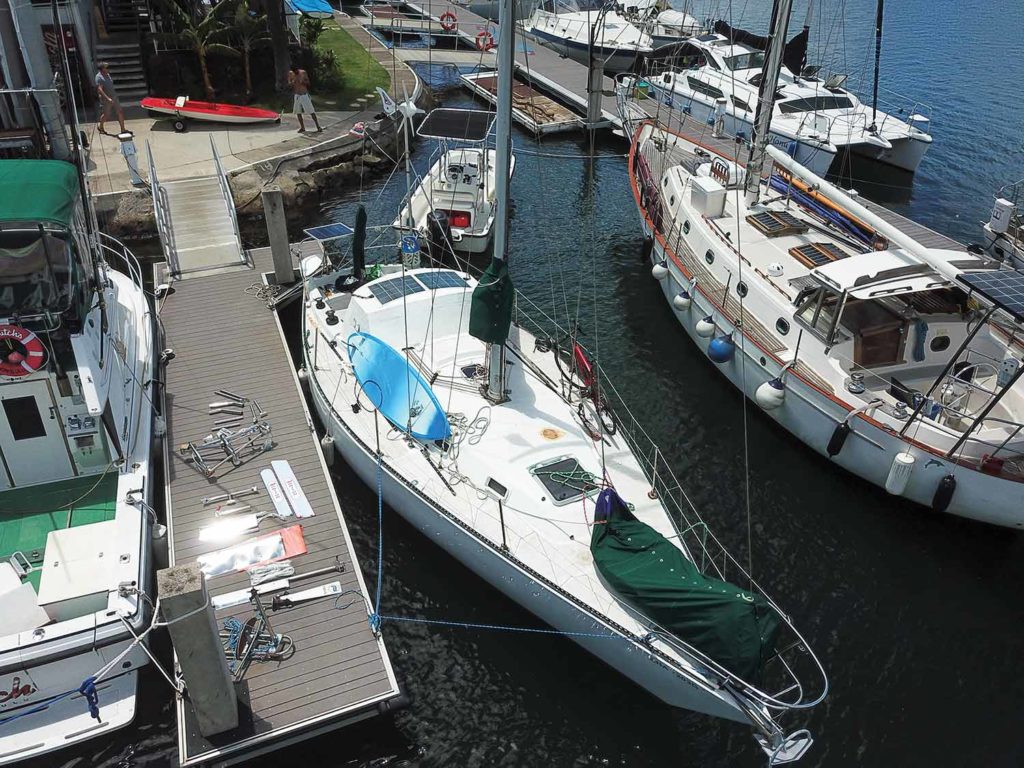
With three solar panels and a wind generator on a boat that sails well and has minimal power requirements, the goal is to access remote surf sustainably while using an absolute minimum of fossil fuels. With a westabout route that should be mostly reaching and off the breeze, including a lot of trade wind sailing, I hope to make most passages with no motoring whatsoever, just like in the days of little, engineless Mongo. Unlike Mongo, however, Quiver is a bit more grown up in her systems and energy requirements. First and foremost, there is a very high-efficiency Engel DC refrigerator that is always on. As well, I have just installed a Katadyn PowerSurvivor 40E watermaker. Like the fridge, she’s on the smaller side of units on the market, but ideally suited for the almost fully renewable-powered 34-foot sailboat.
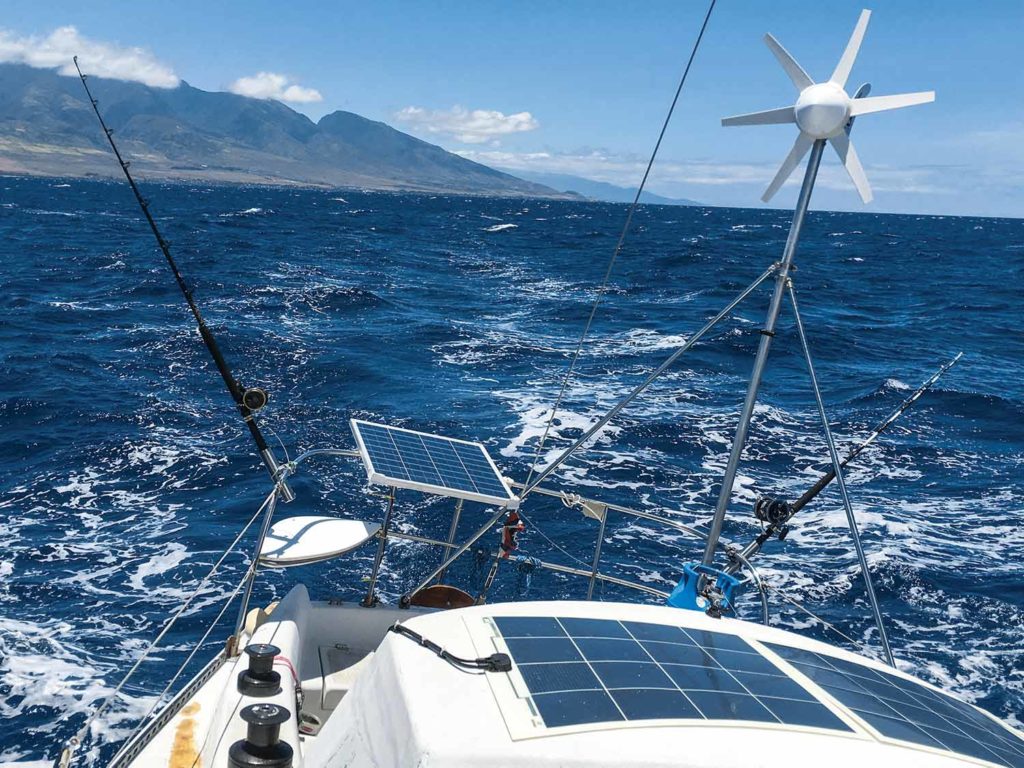
I set off last January bound for the Marshall Islands, which took 17 days. Heading to the Marshalls was the quickest, most direct route around the world from Hawaii. From the Marshalls, it will be on to Micronesia, and Guam before flying back to the West Coast for some work to restock the cruising kitty. During this first season of cruising — and most of my journey — Quiver should be in position to score world-class surf at a variety of remote locations that are very much off the beaten path.
In addition to surfing, I hope to use the extensive quiver of media kit on board, as well as my new degree in multimedia to create compelling video content to help fund the journey. In the end, I hope to complete a three-year surf-focused westabout circumnavigation via Cape Horn, some of it solo, and some with friends and crew.
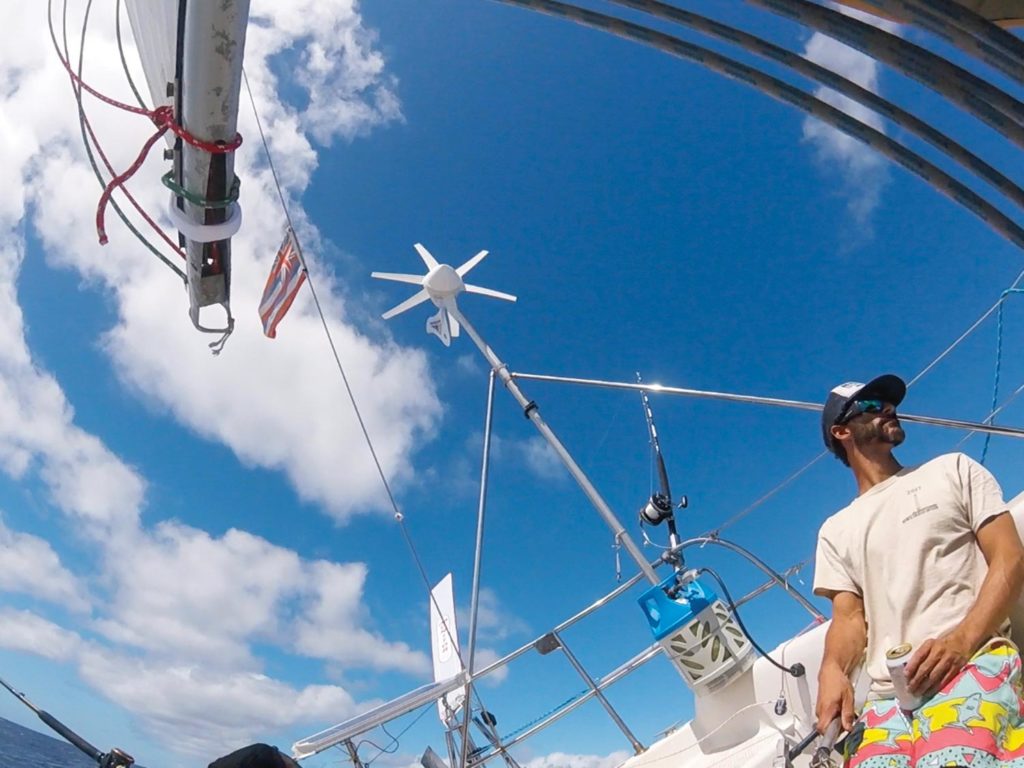
To me, both offshore sailing and traveling have always produced an indescribable feeling where I feel as if I’m living and operating on a higher plane of consciousness. Combining the two and going cruising just makes too much sense for me not to. Voyaging creates the days that are etched deeply into my memory in this world of 15-minute news cycles and information overload. Unplugging from what we call reality and chasing that higher level of living is what constantly draws me back. My journey through life is (mostly) the culmination of conscious decision making and the resultant experiences. Every crossroads is followed by a choice, and at this current juncture, I have chosen to go sailing. Again. Aloha.
At press time, Ronnie Simpson had departed the Marshall Islands bound for Micronesia and Guam. For more on his travels and to check out his underway blogs and videos, visit his website.
Surf’s Up
Quiver has been optimized for offshore work and is ready for my planned three-year westabout circumnavigation via Cape Horn, visiting distant surf locations along the way.








